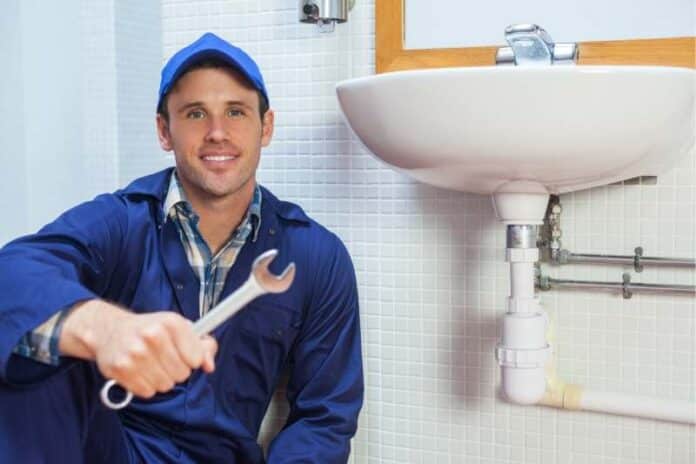
In the realm of home maintenance, the value of primary DIY plumbing knowledge is immense, especially in terms of cost-effectiveness. This article offers a comprehensive discussion about fundamental tips ideal for homeowners seeking to undertake minor plumbing repairs without relying on professional services.
The benefits of possessing the confidence to perform simple DIY plumbing repairs is two-fold: you enhance your skills and save substantially, considering the price of professional services these days.
Understanding Basic Plumbing Systems
To perform successful DIY plumbing, it’s beneficial to grasp the fundamental structure of your household’s plumbing system. Typically, homes contain an intertwined network of components such as pipes, faucets, drains, and valves. Historical periods saw the employment of materials like lead, cast iron, and clay in these systems.
The present-day, however, witnesses the use of more advanced options such as PEX (Cross-Linked Polyethylene), PVC (Polyvinyl Chloride), and copper.
Household plumbing is generally structured around two subsystems. One draws fresh water into the home, while the other expels waste water. Knowing these systems will give you an understanding of how water flows within your home, which is essential for troubleshooting and ensuring effective repairs.
Tools Needed for DIY Plumbing Repairs
For DIY plumbing, it’s crucial to have the right tools readily accessible. Essential equipment includes specific wrenches (like a basin wrench and a pipe wrench), a quality hand auger or a plumber’s snake for handling clogs, and a plunger for quick relief of minor blockages.
Each tool has a designated purpose; basin and pipe wrenches are utilized for adjusting and securing plumbing fixtures, whereas a hand auger and a plumber’s snake are employed for unblocking drains. The humble plunger is always on stand-by for clearing small blockages.
Maintaining these tools involves regular inspections and cleaning to ensure their functionality remains intact. Acquiring them is simple as they are available in local hardware stores or online platforms.
Plumbing Problems and How to Fix Them
Understanding and identifying widespread plumbing problems are key steps in DIY plumbing. The most common are leaking pipes, dripping taps, slow draining sinks, and clogged drains.
Fixing each of these requires some plumbing know-how; for instance, silencing a dripping tap often involves replacing the washer unit, while tackling a slow-draining sink might require a cleaning to remove built-up grime.
However, more complex problems such as deep-seated leaks may necessitate the expertise of a professional plumber. Irrespective of the severity, promptly addressing these issues extends the lifespan of your home’s plumbing system and prevents further damage from taking hold.
Preventive Measures to Minimise Plumbing Issues
As the adage goes, prevention is better than cure and this certainly applies in the context of plumbing. Incorporating preventive habits can drastically decrease the frequency and severity of plumbing issues.
An example of a simple, yet beneficial habit is refraining from disposing of kitchen waste and oil down the sink – this alone can prevent many potential blockages.
Another essential habit is regular cleaning; even a basic vinegar treatment can help flush away residual deposits in your drains.
Seasonal inspections are also beneficial, and tackling any issues upfront can help you avoid more significant problems. It’s worth noting that adhering to guidelines for kitchen waste management and oil disposal can lead to significant financial savings in the long run.
Safety Precautions When Doing DIY Plumbing Repairs
Another critical element of DIY plumbing is safety. Necessary precautions such as wearing suitable protective equipment – gloves and safety glasses – and ensuring sufficient light can minimize the risk of mishaps. It’s also important to regularly inspect your equipment to maintain its good working condition.
Certain tasks may appear straightforward but can pose unseen risks if not performed correctly. Hence, ample preparation and research before starting on any plumbing task are essential. There are many reliable resources available online that can provide you with practical DIY plumbing videos and safety guides.
Conclusion
In conclusion, learning how to manage and carry out DIY plumbing repairs has key benefits. It equips you to handle common problems, carry out regularly scheduled maintenance, and generally ensures the longevity of your home’s plumbing system. Not to mention, the cost savings can be substantial.
It all boils down to understanding the basics of your plumbing systems, having the right tools on hand, being able to identify and tackle common problems, embracing preventive measures, and adhering to necessary safety precautions.
Start applying these practices at home today, and you’ll not only enrich your DIY capabilities but potentially fill up your savings pouch too! With every dollar saved being a dollar earned, adopting a DIY approach is not only beneficial – it’s also a smart move!





